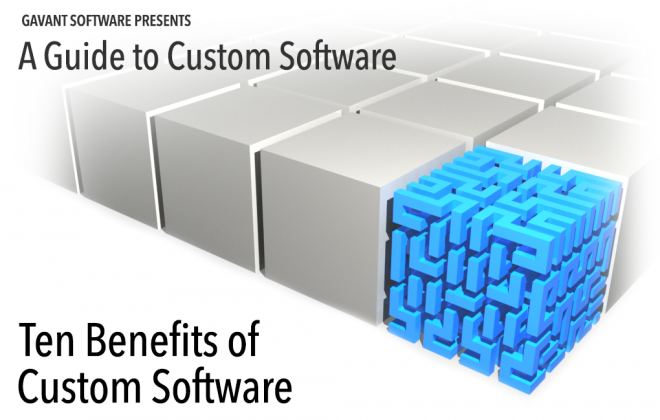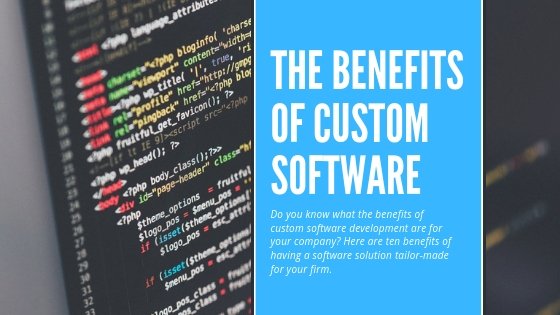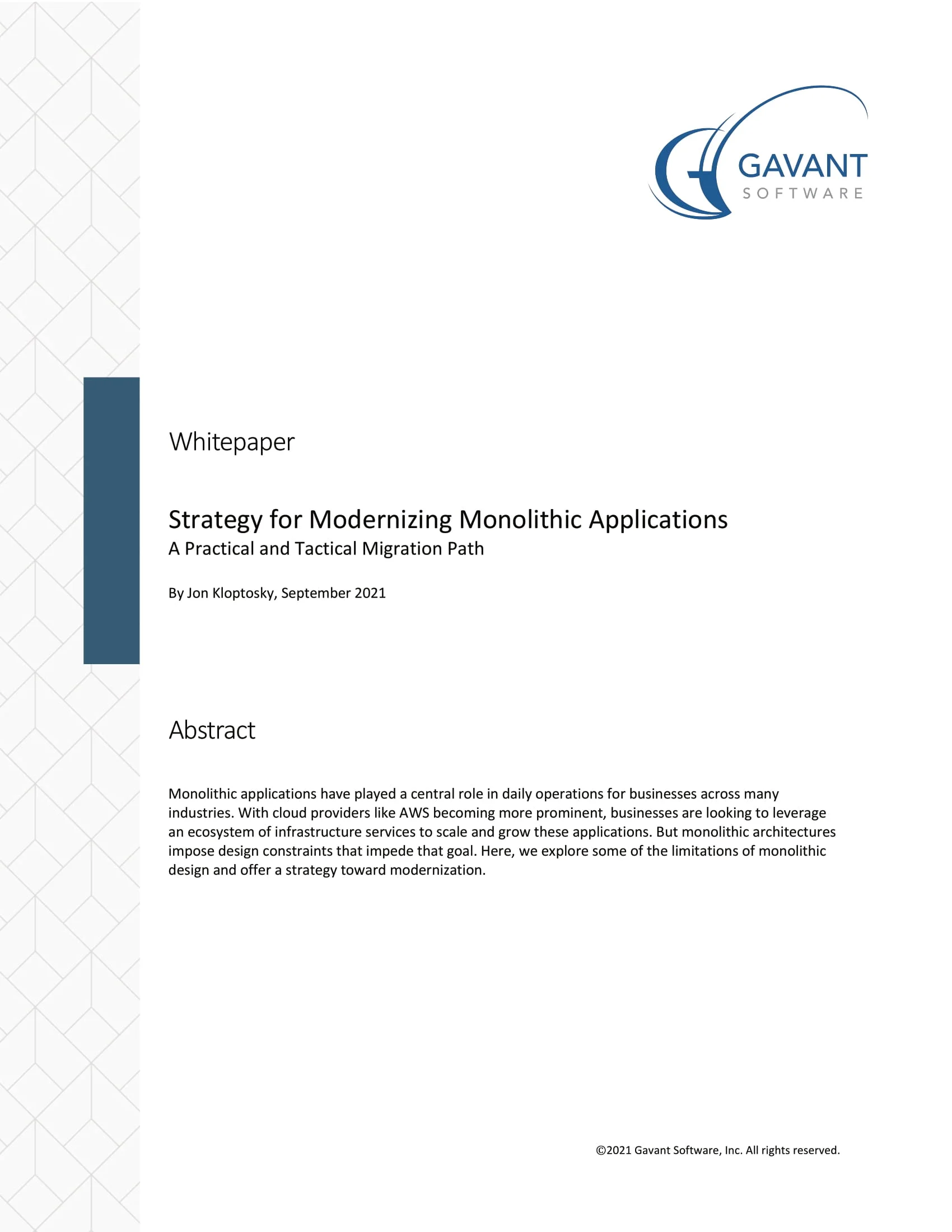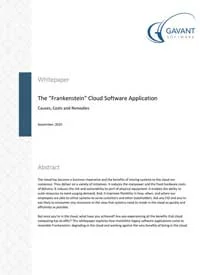Is It Time for New Software?
 As your business environment changes, so too do your software needs. Whether your current solution is misaligned with today’s demands or is at risk due to concerns regarding compliance with industry standards and regulations, a common thread exists: the software has room for improvement. A deficient system sacrifices not only performance, but your company’s bottom line as well. Here, we pinpoint some common signs that it may be time to consider a new software solution.
As your business environment changes, so too do your software needs. Whether your current solution is misaligned with today’s demands or is at risk due to concerns regarding compliance with industry standards and regulations, a common thread exists: the software has room for improvement. A deficient system sacrifices not only performance, but your company’s bottom line as well. Here, we pinpoint some common signs that it may be time to consider a new software solution.
It’s not uncommon to get caught in the status quo and become complacent with your incumbent software system. This article helps you to take an objective look at your software by identifying critical red flags that may signal it is time to re-evaluate your software solution. An honest assessment of your system will help determine if your present software is truly the right solution for today’s business environment. Below, we touch upon some common indicators that the utility of your software may have deteriorated, potentially causing inefficiencies and headaches for your business.
It may be time for a new software solution if your current software…
…is not mobile capable. With today’s “always on” culture, if your business is not mobile capable then you’ll quickly turn off your target audience. Mobile capability should not be an afterthought, as mobile-designed software affords more broad and instant access. By thinking mobile first with your solution – whether via download of a native app on your device or via web application targeting all internet browsers – your software can provide greater flexibility in reaching your target audience. Customers can now instantly engage with your business directly from their devices, while employees can easily utilize the system and complete tasks without having to be tethered to their desks. In going mobile, both you and your customers can do business anytime, anywhere.
 …lacks integration. When the separate elements of your system require the duplication of data entry, detailed calculations, or other essential processes, employee productivity is sacrificed along with the business’s bottom line. System integration enables each piece to work together harmoniously, streamlining the code to eliminate redundancies. An integrated system enables a user to interact with its various elements cohesively and intuitively, creating a more efficient workflow. Additionally, maintenance costs – both short- and long-term – are reduced, allowing more time to be spent with the software in completing tasks rather than finding and fixing bugs and other issues.
…lacks integration. When the separate elements of your system require the duplication of data entry, detailed calculations, or other essential processes, employee productivity is sacrificed along with the business’s bottom line. System integration enables each piece to work together harmoniously, streamlining the code to eliminate redundancies. An integrated system enables a user to interact with its various elements cohesively and intuitively, creating a more efficient workflow. Additionally, maintenance costs – both short- and long-term – are reduced, allowing more time to be spent with the software in completing tasks rather than finding and fixing bugs and other issues.
…is an inefficient legacy system. A legacy system is the software backbone that enables a business to perform many of its core processes. It’s common for legacy systems to be utilized for years without any significant advancements, rendering the system sub-optimal. However, due to the key role the system plays within the company, sunsetting the software may not be an option. When legacy software is performing at a sub-optimal level, it can act more toward hindering success of your business rather than advancing it. A custom legacy software facelift and other modernization techniques can retain the core attributes of your legacy system while helping the new software meet or exceed the standards of today’s tools and solutions.
…has a complicated user experience. Software designed without the user in mind is bad software. A poor user interface (UI) and/or user experience (UX) can frustrate your audience and make them abandon the software entirely. An inadequately designed UI can pose a problem both internally and externally: your employees may find it difficult to complete their tasks, decreasing their output and efficacy; customers may have trouble navigating the software causing them to abandon their willingness to make a purchase or otherwise spend their money with your business. A troublesome UI impacts the UX too, as it creates a burdensome and vexing experience for users. If these users happen to be customers, it’s a very real possibility they will turn their attention elsewhere to find a more suitable solution to satisfy their needs.
 …faces compliance issues. Every industry has regulations and laws in effect that must be adhered to in order to avoid significant penalties – it is imperative for your business to be compliant with any that can adversely affect the company. Whether these regulations cover confidentiality, accurate reporting, cyber security, or some other topic pertinent to your business environment it’s important to understand how they can impact the continued success of your organization. Noncompliance is easy to fall into, but building safeguards into your software helps protect against future compliance missteps. If the software’s current adherence to existing regulations is lacking or if it is at risk for those edicts on the horizon, it is critical for your software to fall in line.
…faces compliance issues. Every industry has regulations and laws in effect that must be adhered to in order to avoid significant penalties – it is imperative for your business to be compliant with any that can adversely affect the company. Whether these regulations cover confidentiality, accurate reporting, cyber security, or some other topic pertinent to your business environment it’s important to understand how they can impact the continued success of your organization. Noncompliance is easy to fall into, but building safeguards into your software helps protect against future compliance missteps. If the software’s current adherence to existing regulations is lacking or if it is at risk for those edicts on the horizon, it is critical for your software to fall in line.
…doesn’t align with today’s business needs. As your company experiences success and enters a growth stage, your business needs are sure to shift, impacting the software that you’ll utilize. It’s common for startups to opt for a relatively simple and low-cost solution to satisfy their software requirements as they strive to become an established and known entity. But as startup transitions to mature business, it’s a near certainty that today’s requirements differ drastically from when the company was first breaking in; perhaps an expanded feature set or greater scalability is necessary. There are different ways to attain these new software requirements, but whether you opt for a ready-made or custom solution, an upgrade to your software system will help you keep pace with the changing market dynamics of your industry.
As this article highlights, certain software system attributes – or lack thereof – may suggest a re-evaluation of the current system to be prudent. Taking an objective look at the state of your software can help identify possible blockers and bottlenecks that can ultimately slow the continued success of your business. While your current solution may perform adequately, if any of the points discussed here arise during your software assessment then it’s time to think about a new software solution.




 Strategy for Modernizing Monolithic Applications
Strategy for Modernizing Monolithic Applications
 The "Frankenstein" Cloud Software Application
The "Frankenstein" Cloud Software Application
 A Guide to Custom Software Development
A Guide to Custom Software Development